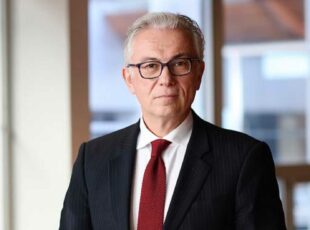Covering one’s tracks
The programme for bailing out banks seems nonsensical to me and I have often expressed my criticisms of it.

Sergey Alexashenko
This programme is very dear to the hearts of its participants (Finance Ministry, Central Bank and the state corporation for the protection of bank deposits, the Deposit Insurance Agency). It has already cost over one and a half trillion roubles and, taking into account the interest to be paid, the federal budget is going to have to shell out considerably more than two trillion roubles.
Financing the bail-outs
As of 31 December 2015, the cumulative total disbursed by the Agency (DIA) was 1,537.55 billion roubles: 1,270.47 billion roubles from the Central Bank (including 294.81 billion roubles for the rehabilitation of the Bank of Moscow), 259.33 billion roubles from federal contributions to DIA assets, and 7.75 billion roubles from DIA funds.
The scheme is ridiculously simple.
The Central Bank turns a blind eye to capital and clients’ deposits being siphoned off from a bank; those same Central Bank passive onlookers then decide that the bank has to be saved (although of 30 bail-outs, not one bank has yet managed to return to full operation); the same people choose which bank will save the bankrupt bank and decide how much money has to be allocated for this noble purpose; then those very same people give the DIA a loan for 6-8 years at an interest rate of 0.5% (that’s right – half a percentage point); after that the same people, or some of them, visit the DIA where, as members of the Board of Directors, they decide to issue a loan of billions of roubles (at an interest rate of 0.51%) to the banks involved in the bail-out. The bank doing the rescuing then uses the funds it has received to buy a federal loan bond at the current rate of return from the Finance Ministry and receives a guaranteed income; the Finance Ministry meanwhile uses funds from the federal budget for the next 6-8 years to pay the interest on the bond sold to the bail-out banks. At maturity, the bond should pay off all the money received as a loan.
To be fair, it should be said that the banks have paid back slightly more than 20% of the one and half trillion roubles disbursed. To this end, some assets have been transferred on to the DIA balance sheet. But their real value is unknown as the DIA site carries no information about the nature of these assets, why the DIA needs them, what it has done – or intends to do – with them.
There have never been, nor are there still, any clear or transparent criteria for deciding which bank should be bailed out – and which should be left to collapse – and it is only the bureaucrats who are allowed to have anything to do with analysing proposals for bail-outs. It is thus obvious that enormous sums of money have disappeared, but the results, as Viktor Chernomyrdin so poignantly expressed it in 1993 (“we wanted to do it better, but it turned out as it always does”), leave a great deal to be desired. Moreover, after some time it emerged that the rescuers were finding the allocated funds insufficient, so multiple hasty appeals for top-ups were launched at the Central Bank because “what you sent last week was gobbled up straight away” (a quote from Korney Chukovsky’s children’s story Telephone).
There was no way, for instance, of refusing the SMP bank, owned by a member of the elite Ozero dacha cooperative, by the name of Rotenberg
There was no way, for instance, of refusing the SMP bank, owned by a member of the elite Ozero dacha cooperative, by the name of Rotenberg; someone else was put through the third degree… but money still had to be allocated. This way the federal budget is incurring ever more debt, although we know that there is no longer any money left in it, so any extra unplanned kopecks spent throws the Finance Minister, who is also a DIA board member, into a blind spin of rage. It looks to me as though this endless stream of new decisions about money to be allocated was one of the main reasons for the recent purge of the Central Bank’s supervisory committee.
When I decided to look at the final summary of what the sacked “supervisors” had been up to, force of habit led me first to the usual place on the DIA site in the hope of downloading the usual tables, but I didn’t find any. So the bureaucrats’ cat had a very good idea of whose meat she had been eating and decided to sweep all the information about her dinner under the carpet – to avoid any uncomfortable questions for the officials.
We must disabuse the said officials: we will find the information, we shall be asking questions, and we shall name and shame those who are personally responsible.
Central Bank Board of Directors | DIA Board of Directors |
| Nabiullina E.S. | Siluanov A.G. |
| Luntovsky G.I | Akmov M.A. 1st deputy head Government Central Office |
| Tulin D.V. | Barsukov S.V. Dept. Head, Ministry of Economic Development |
| Shvedov S.A. | Ignatyev S.M. |
| Yudayeva K.V. | Isayev I.O General director DIA |
| Ivanova N.Yu. | Leshchevskaya Yu. A. Dept. Head, Ministry of Economic Development |
| Pozdyshev V.A. | Malyshev F.I. desk officer, Presidential Administration |
| Skobelkin D.G. | Moiseyev A.V. Deputy Minister of Finance |
| Chistykhin V.V. | Nabiullina E.S. |
| Simanovsky A.Yu. | Podguzov N.R. Deputy Minister of Economy |
| Ignatyev S.M. | Pozdyshev V.A. Deputy Chair, Central Bank |
| Savinskaya N.A. | Simanovsky A.Yu. |
| Sukhov M.I. | Sukhov M.I. |
This article was first published in Sergey Alexanshenko’s blog on his website
Sergey Alexashenko is a former deputy chairman of the Central Bank of Russia, and former chairman of Merrill Lynch Russia



